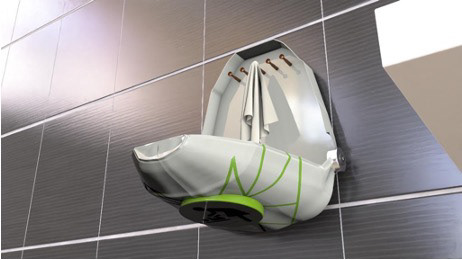Project Summary
The project, led by Wow Mom Ltd, aims to address the lack of baby changing facilities in public toilets within Nairobi's Central Business District (CBD). The initiative focuses on installing Baby Changing Units (BCUs) in all public restrooms in the area to ensure that caregivers have a safe, sanitary, and accessible space for changing infants' and toddlers' diapers.
Key Points
Problem Statement: Poor sanitation, particularly for children under five, contributes significantly to health issues like diarrhea, which is a major cause of mortality in Kenya. The lack of child-friendly sanitation facilities in public spaces is a critical problem, leading to unsanitary conditions and health risks.
Project Goals: The project aimed to install BCUs in all public toilets in Nairobi's CBD. These units would be designed to be safe, accessible, and sanitary. The inclusion of these facilities would help reduce environmental pollution, enhance dignity for caregivers and children, and encourage more families to use public spaces.
Impact: The installation of these facilities was expected to improve the overall sanitation and health of children, support gender equality by providing facilities accessible to both men and women, and reduce the psychological stress associated with changing diapers in public.
Collaboration Request: Wow Mom Ltd sought support for the approval process, mobilization, and sensitization of public toilet operators to ensure the successful implementation of this project, ultimately contributing to making Nairobi a more child-friendly and vibrant city.
Wow Mom Ltd also partnered with
A user journey map for a caregiver within the Nairobi municipality who struggles with the lack of access to baby changing units in public bathrooms
Desired user journey map of caregiver upon project completion
Concept & Design
The concept phase of the project focused on the research and initial groundwork (including budget considerations) required to install Baby Changing Units in public toilets within Nairobi's CBD. The design phase transitioned from planning to the actual creation and customization of the BCUs.
Inspiration: Inspiration on this phase was derived from basic shapes integrated into simple forms and in ways that were unique. One of the stated requirements was to make sure that the designs were simple and could easily be translated into the actual design.
Material Requirements: The main material recommendation for this project was wood as it fit the allocated budget and would be able to be easily manipulated to fit the desired design.
Project budget allocation (per unit produced); Ksh- Kenyan shillings
After research and initial groundwork was laid down, the project moved on to concept development. Sketches were created and selected for further development.







Initial product sketches
Selected product sketch for development
The design is comprised of a concave cover/top with a void at the bottom that opens up. One of the shelves is curved to allow it to carry the caregiver’s bag while the other is straight, for the placement of the changing utilities.




Developed 3-D sketch version 1
In this first version, the shelf was taken off completely and replaced by hooks as a space-saving concept. This would allow for caregivers to hang their bags and whatever they would need.


Developed 3-D sketch version 2
In this second version which was the one that was eventually selected, the shelf was included but as a moveable contraption. The hooks, however, which happened to become a really important aspect of the changing unit were then added to the exterior, on the sides as opposed to having them in the unit.


Developed 3-D sketch version 2 (Version that shows individual contraptions for development)
Results
The project was successful and upon completion, there was a 83% adoption rate of the baby changing units by the Nairobi City Council.